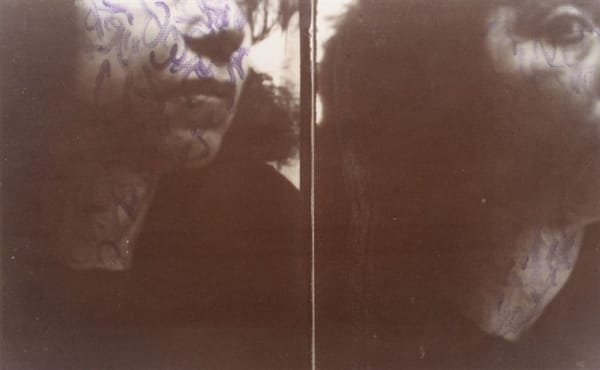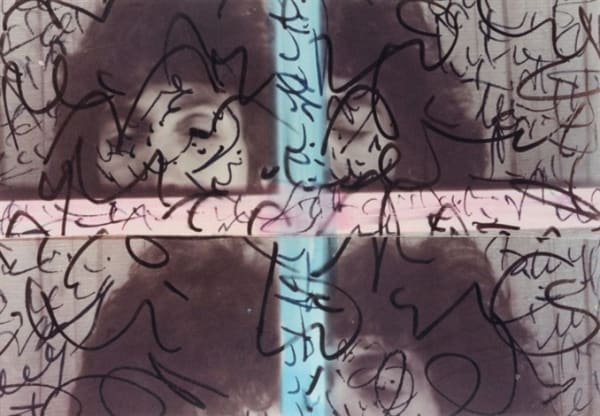-

-
First of all, the photobooth format is the tail end of the great tradition of portraiture. What it's come down to is this miniature head and shoulders view, complete with draperies in the background, referring to the great tradition, now available for anyone to use as a form of official identification. In this particular form of portraiture, there's no intervening photographer. You're asked to engage in a private capacity with the automatic camera and to project your own self-image toward that camera as toward a mirror, in order to produce a document that verifies your identity in a public sense. In addition to the draperies which optionally form the background, there is another set of curtains that is fore grounded-- I mean the ones one pushes aside in order to enter the privacy of the little booth. It's almost like a confessional booth, with the camera as silent witness...
Originally, I was pursuing this in portraits of other people and portraits the machines took of themselves. The departure I made in the self-portrait series is, first of all, to shift the scale, beginning as always with the miniature format and enlarging it up to the point where the heads become almost life size, in order to engage viewers collectively by using a more public form of address. The images are made in tube stations, railway stations, etc. very late at night, hence the Midnight of all the titles.
The format produced in phototobooths is curious and says a number of things about the way we identify and document 'self' using these machines. The images produced are episodic, filmic and multiple. It's a fragmented representation and I find that very compatible and I usually maintain it in the final self-portrait. One has to leave a great deal open, as I'm working blind and have no control over the unexpected results brought about by different focal lengths, lighting, etc. in various photomat booths. So it's a relatively improvised presentation of self.
Over the surface of these shapes or embodiments are sets of my crypto-linguistic, calligraphic signs or marks. Slips of the pen, they've been called, or automatic writing. These marks are a kind of personal handwriting for me. Automatism has a very long history within modern art going back to Surrealism and the experiments with automatism, continuing in abstract expressionism, etc. I like the idea of the artist's handwriting and personal mark, the personal touch, which are always contrasted with conventional and coded notational systems. For me, it's a kind of substitute for the spurious or uncomfortable, supposedly unified and consistent self of social discourse. To substitute for this spurious 'me' I use multiple views and handwritten signs; these signs don't reveal my so-called subjectivity but perhaps ironically refer to notions of an authentic 'I' demonstrated by voice or signature."
Additional information and images from this series can be found in the following .We are grateful to Susan Hiller and her studio for assistance in cataloguing these pictures.





